Why does the onion rot in the garden and how to fix it?
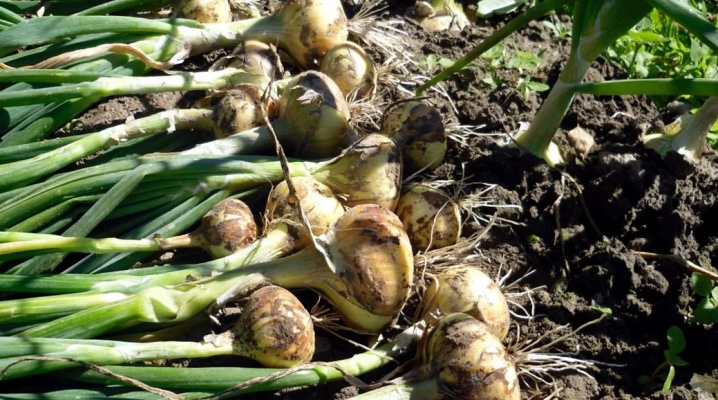
Many summer residents are faced with such a problem as rotting onions in the garden. About why this happens, what to do with diseases that cause the plant to rot, and how the plantings can be processed, we will tell below.
Possible reasons
Improper care
Proper care is moist for any plant. This includes watering, timely feeding, and compliance with the rules of crop rotation. If any of this is problematic, it can cause the onion to rot.
So, over-watering can cause a similar problem. It is necessary to carefully control the amount of water, otherwise it is fraught with the development of fungal diseases, which cause rotting. Waterlogging of the soil can also occur due to heavy and frequent rainfall. In this case, it is necessary to use drainage, which can be expanded clay or coarse sand. This will help eliminate excess fluid.
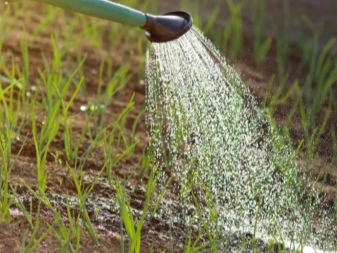
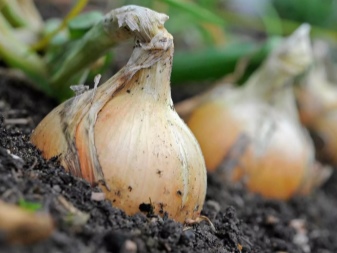
Another problem is fertilizers, namely their excess. This concerns nitrogen. This is a necessary element, with which the plant needs to be fed even at the initial stages of its development, however, further it loses its significance for it. If nitrogen is in the composition of the feeding for adult onions, and it accumulates in the soil, then this gradually contributes to the softening and rotting of the bulb.
If we talk about the correct crop rotation, then we are talking about the planting site for the plant.
If you plant onions in the same areas every year, then over time, pathogenic microorganisms and parasites begin to accumulate in the ground. In the future, they actively attack plants, destroying it and causing rotting. In addition, the lack of crop rotation is fraught with soil depletion. Onions begin to lack nutrients, which subsequently causes rot.
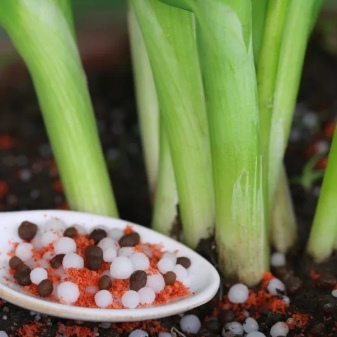
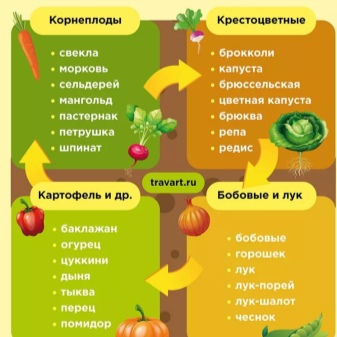
Pests
One of the pests that can cause onion rot is the onion fly. This parasite is active in the summer, it is 8 millimeters long and has a light gray color. In many ways, the insect looks like an ordinary fly. Due to the attacks of this insect, the onion begins to grow more slowly, yellowness is observed on its feathers, they wither and dry out. From the onion itself, you can feel a sharp and unpleasant aroma: it begins to rot.
Another pest is stem and bulb nematodes. They are small worms that are found in the ground. Because of their attacks, the onion begins to develop more slowly, its feathers, stems and root system begin to soften and rot. These parasites have a high vitality, they begin to show their activity mainly in warm weather and waterlogging of the soil.
There are no specific methods for treating a plant from this harmful insect, so it is best to try to avoid its appearance by regularly removing weeds and observing the rules of crop rotation.
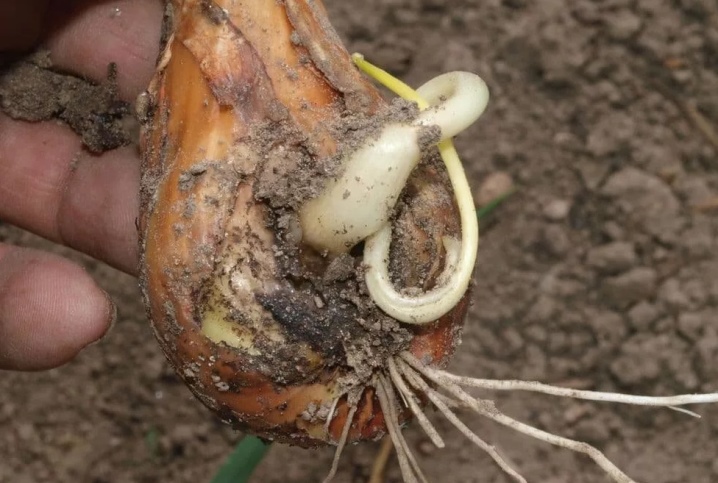
Weevils are another harmful insect that negatively affects plantings. This parasite has a black and strong body, the length of which is about 3 millimeters. It is necessary to get rid of it as early as possible. At first, he simply attacks the onion foliage, after 2 weeks the insect moves closer to the soil to lay eggs there.
Onions are often attacked by such an insect as the root-eater. It is a parasitic insect whose larvae develop inside the bulbs. This parasite lays eggs in the soil, while the larvae move inside the bulb through the root system.There they eat the insides of the planting, which leads to its rotting and death. Onion rotting can be seen by the yellowness and wilting of its outer part. To eliminate a harmful insect, you can use insecticides and treatment with special preparations.


Fight disease
Fusarium
Fusarium rot is a common fungal disease, which should be treated even at the early stages of its development. With this disease, the onion turns yellow, its leaves die off and become deformed. The plant begins to grow several times slower, the roots change their color to brown and begin to rot. The onion begins to fade rapidly, and mycelium filaments can be found on its heads in the area of the bottom.
This disease occurs mainly due to heat and a large amount of moisture. In addition, an onion fly can also infect a planting. To prevent fusarium disease, you need to warm up the seed, and also treat it with special preparations, for example, "Fitosporin" and grow onions in cool areas.
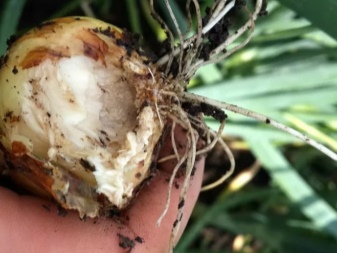
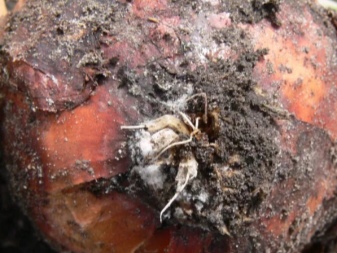
Cervical rot
This disease is specific to the bulb. It occurs during the storage period of the onion, however, the defeat occurs precisely during heavy rainfall. With this disease, the bulb rots completely. The decay process begins from the neck, then its scales soften, which change their color to gray.
To avoid this disease, it is necessary to properly store the onion, as well as follow the rules of crop rotation and process the seeds of the plant with special means. Fighting the disease when it has already hit the bulbs is useless.

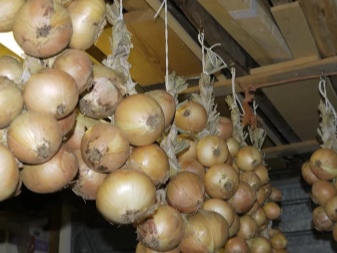
Bacterial rot
This disease is also called "wet rot". It begins to activate and spread throughout the plant due to the abundance of moisture, and high temperatures only contribute to its activity. This disease can manifest itself not only during the growth of the plant, but also during its storage.
In the early stages of the disease, small specks of various shapes are formed on the foliage, having a serous or dark brown color. Over time, they begin to grow, and the leaves become softer.
This disease can also start from the roots and flowers of the planting. In this case, the bulb will simply rot, which will be accompanied by a sharp and unpleasant aroma. To avoid the appearance of this disease, it is necessary to devote time to high-quality cleaning of the beds after the final harvest and to observe the crop rotation correctly.
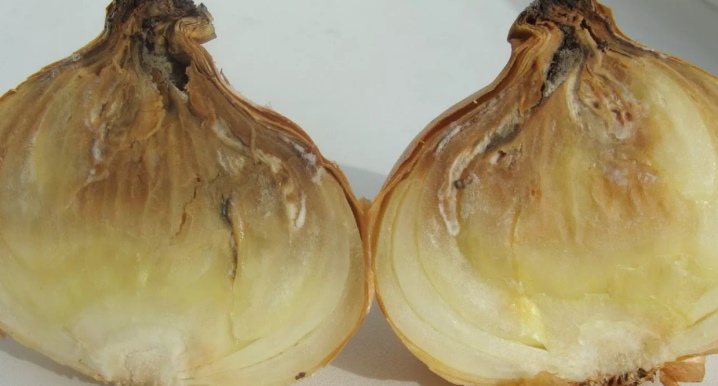
Peronosporosis
This disease is also often referred to as downy mildew. The reason for this is that the symptoms of peronosporosis and powdery mildew are very similar in the first stages. At first, a serous bloom begins to appear on the onion feathers, after which the foliage begins to deform, darken and dry. The plant itself weakens significantly, which is why it subsequently soon dies. The disease is actively developing and quickly manifests itself in the remaining beds.
To save the plant in the early stages of the development of the disease, you can resort to using folk remedies. In such cases, solutions made on the basis of dandelion, nettle and other weeds are perfect. Plants are sprayed with them for preventive purposes. Such solutions will not only be able to protect your plant from disease, but will also serve as a good feeding for them.
If the disease is at an advanced stage, then you cannot do without the use of special drugs, folk remedies in such cases will be powerless. The most effective remedy in the fight against false dew is Ridomil Gold.
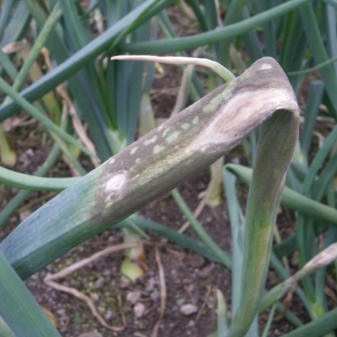
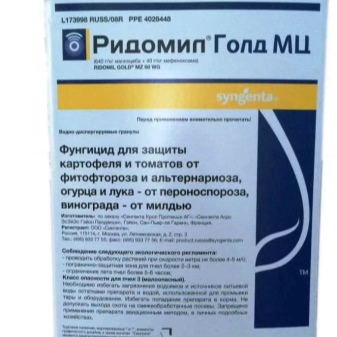
Other
Another disease of onions is white rot. In the first stages of development, wilting and drying of onion feathers is characteristic, then you can notice the formation of a white bloom on the bulbs. A disease can appear due to cold weather and excessive humidity.In order to protect the plant from this disease, it is necessary to remove the remnants of last year's plants from the beds, apply fertilizers, for which tank mixtures are also suitable. In addition, waterlogging of the soil should not be allowed.
Occurs on onions and Alternaria. With the onset of this disease, whitish spots appear on the onion feathers, which over time grow and increase in size. The color of the leaves changes to brown, they begin to dry. If at this time the plant is watered in large quantities, allowing excess moisture, then a gray-black bloom will begin to appear on the feathers.
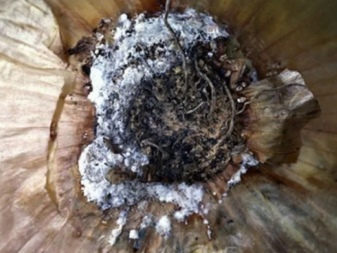

Aspergillosis is another common fungal disease. It most often occurs in unripe bulbs that have been removed from the garden too early. With this disease, the bulbs noticeably soften, and a dusty layer appears under their "shirt".
You can often find rust on onions. When a disease occurs on onion feathers, you can notice the appearance and spread of reddish dots, which in many ways resemble rust. With the course and development of the disease, they begin to turn black and dry.
To avoid the appearance of the disease, it is necessary to follow the rules of crop rotation, to avoid high humidity. If a disease occurs, it is necessary to eliminate the affected plantings as soon as possible so that the disease does not spread.
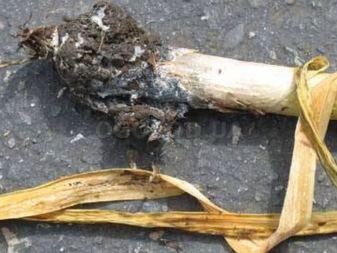

Prevention measures
Preventive measures can prevent fungal diseases and harmful insects from developing. Initially, the bow must be well cared for. This requires on a regular basis inspecting onion feathers for infestation or pests, cleaning weeds, loosening the soil and controlling soil moisture, avoiding excess water. It is also necessary to supply the plants with the necessary amount of fertilizers, carrying out root and foliar feeding. But to allow an overabundance of nutrients or, conversely, a deficiency, otherwise there is a risk that the onion will begin to rot.
It is also necessary to follow the rules of crop rotation, periodically changing the place of growing onions, and before planting the plants, treat the seeds. In addition, for the purpose of prevention, it is necessary to periodically treat plants with special solutions made according to folk recipes.
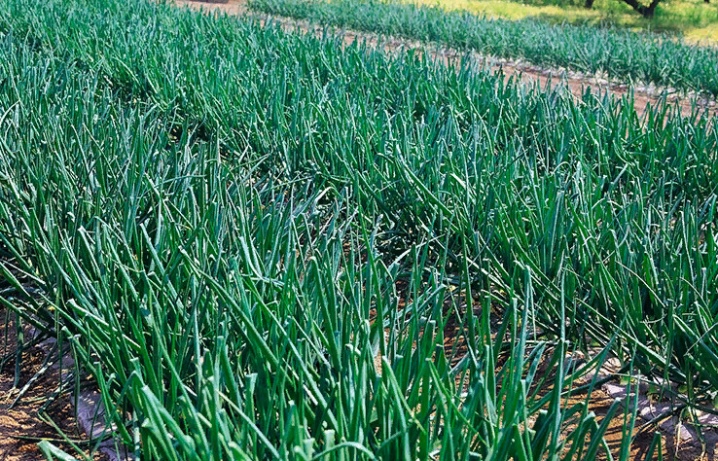













The comment was sent successfully.